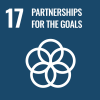The humanitarian-development divide has long been a contentious debate in both academia and government. Despite the recent surge in the cost, frequency, duration and severity of humanitarian crises, humanitarian and development disciplines and communities of practice have continued to operate in silos. This article aims to bridge the humanitarian-development divide by interlinking the Agenda for Humanity and the 2030 Agenda for Sustainable Development. The newly proposed context-conflict-contingency model of humanitarian-development connections constitutes the conceptual foundation, which is then tested by the findings of the network analysis of the 169 SDG targets of the 2030 Agenda and the 5 responsibilities, 24 transformations and 32 core commitments of the Agenda for Humanity. The basic premise is that if policy makers can locate the linkages between the two agendas, they can more readily think about how certain SDG targets can work towards the achievement of both development and humanitarian goals. Stepsthat lead to operational guidelines for doing so are not covered in this article. They could be the topic of the next research agendas.
Humanitarian SDGs: Interlinking the 2030 Agenda for Sustainable Development with the Agenda for Humanity
Working Paper Date:
Category: Social Development
Document Symbol: ST/ESA/2019/DWP/160
JEL Classification: D74, D78, J18, O19, O20, O21, Q01
Keywords: Sustainable development, Sustainable development goals, SDGs, development, development planning, humanitarian-development divide, conflict, conflict resolution, crisis management, peace, policy formulation, public policy
Working Paper File:
1597341828.0724.pdf
791.58 KB
 Welcome to the United Nations
Welcome to the United Nations
